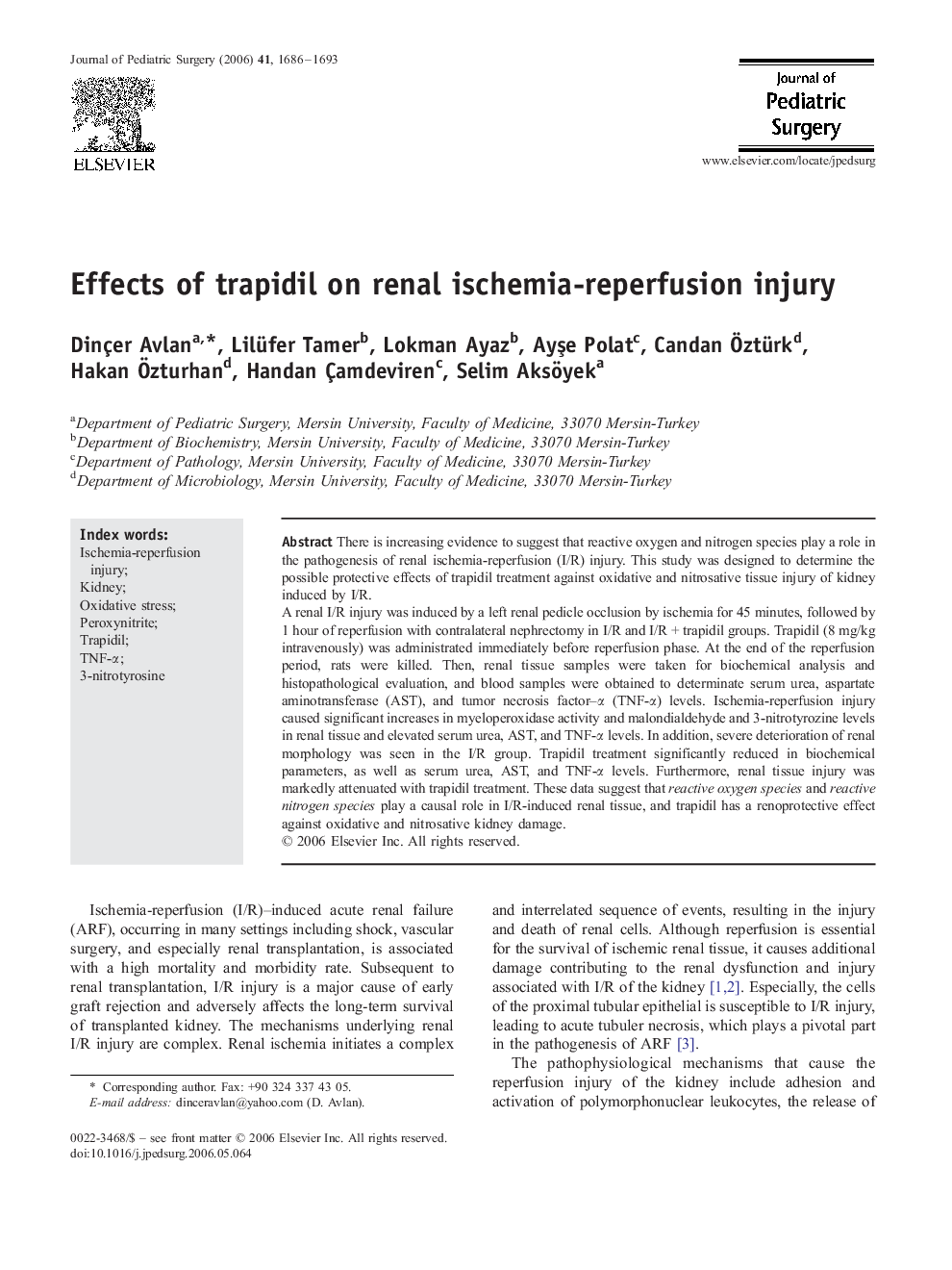| Article ID | Journal | Published Year | Pages | File Type |
|---|---|---|---|---|
| 4160724 | Journal of Pediatric Surgery | 2006 | 8 Pages |
Abstract
A renal I/R injury was induced by a left renal pedicle occlusion by ischemia for 45 minutes, followed by 1 hour of reperfusion with contralateral nephrectomy in I/R and I/R + trapidil groups. Trapidil (8 mg/kg intravenously) was administrated immediately before reperfusion phase. At the end of the reperfusion period, rats were killed. Then, renal tissue samples were taken for biochemical analysis and histopathological evaluation, and blood samples were obtained to determinate serum urea, aspartate aminotransferase (AST), and tumor necrosis factor-α (TNF-α) levels. Ischemia-reperfusion injury caused significant increases in myeloperoxidase activity and malondialdehyde and 3-nitrotyrozine levels in renal tissue and elevated serum urea, AST, and TNF-α levels. In addition, severe deterioration of renal morphology was seen in the I/R group. Trapidil treatment significantly reduced in biochemical parameters, as well as serum urea, AST, and TNF-α levels. Furthermore, renal tissue injury was markedly attenuated with trapidil treatment. These data suggest that reactive oxygen species and reactive nitrogen species play a causal role in I/R-induced renal tissue, and trapidil has a renoprotective effect against oxidative and nitrosative kidney damage.
Related Topics
Health Sciences
Medicine and Dentistry
Perinatology, Pediatrics and Child Health
Authors
Dinçer Avlan, Lilüfer Tamer, Lokman Ayaz, AyÅe Polat, Candan Ãztürk, Hakan Ãzturhan, Handan Ãamdeviren, Selim Aksöyek,
